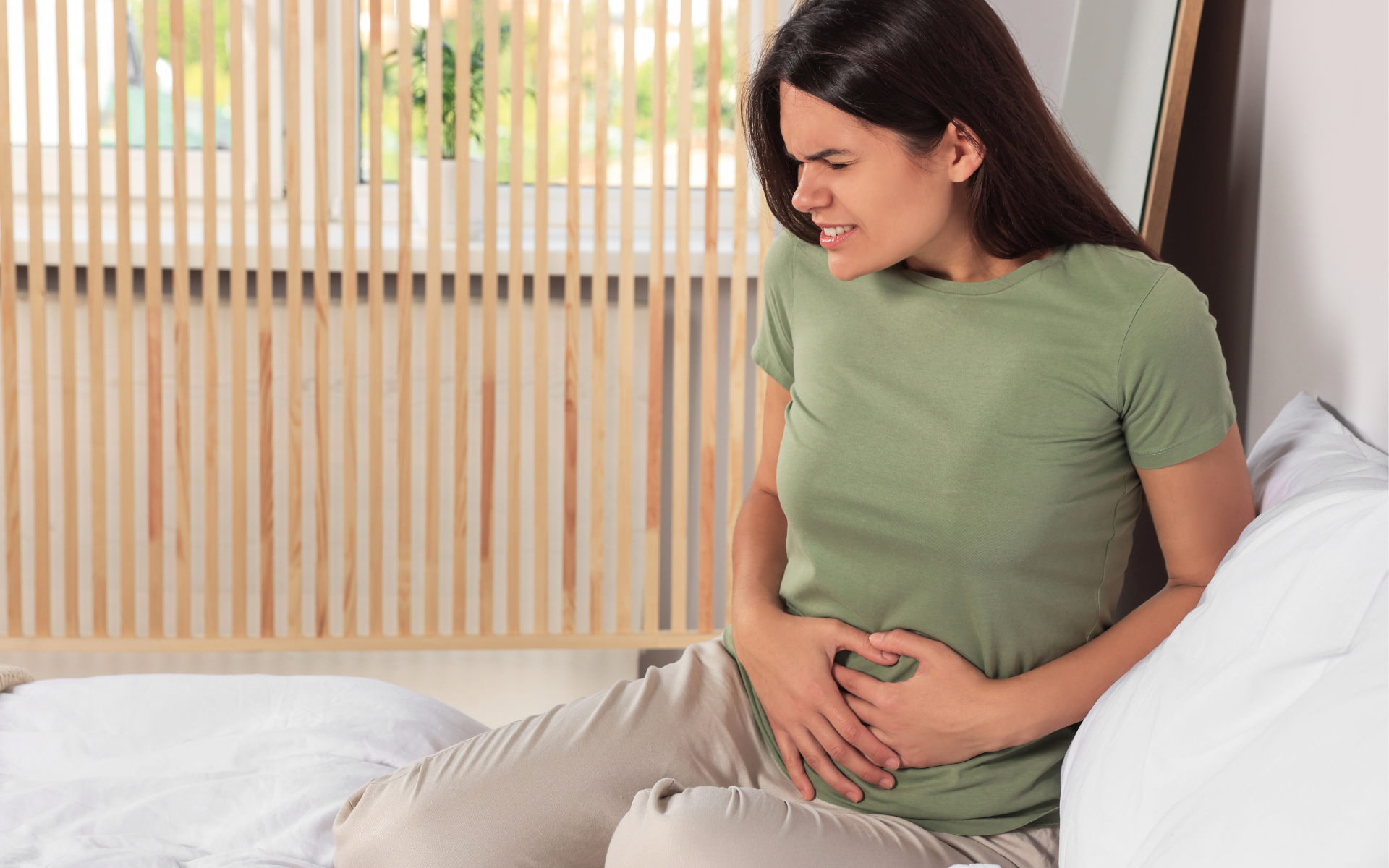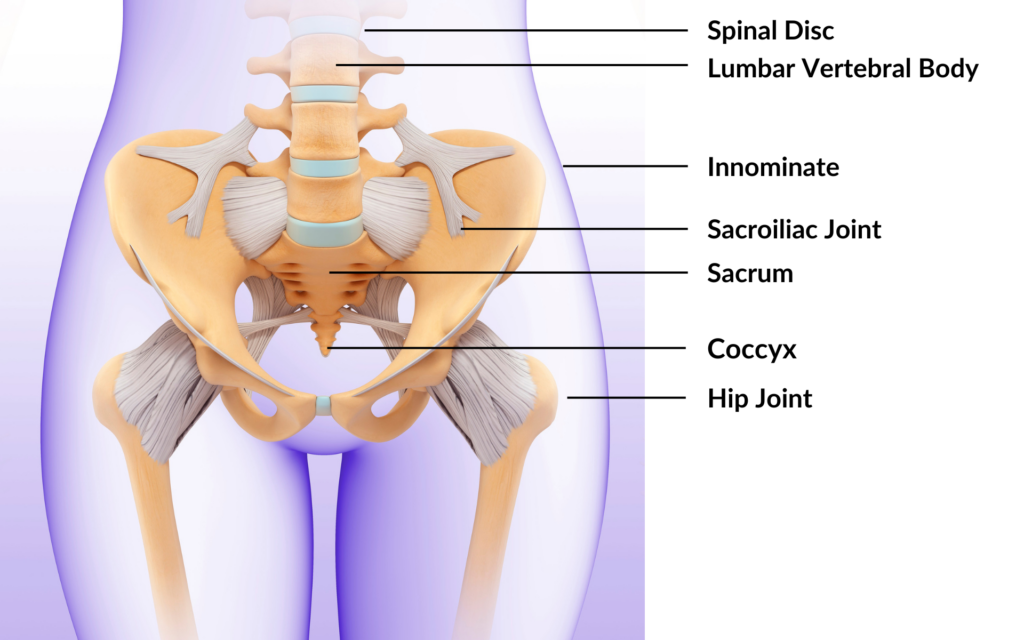Pelvic pain seems to be a common issue amongst individuals, irrespective of gender. It often presents as discomfort localised in the lower abdomen and is a distressing condition affecting individuals of all genders. In particular, pelvic pain triggered by coughing poses unique challenges and concerns. Understanding the association between coughing and pelvic structures is essential in managing this condition effectively.
In this article, we’ll explore the underlying anatomy of the pelvis and how it interacts with the mechanics of coughing. We’ll also discuss the various conditions that can lead to pelvic pain exacerbated by coughing, ranging from muscular strain to more serious underlying issues such as pelvic organ prolapse. Understanding these conditions is crucial for accurate diagnosis and effective treatment.
Understanding the Anatomy and Physiology of the Pelvic Region
The pelvis, a basin-shaped structure that serves as a foundational structure in the human body, facilitating both support and mobility. This basin-shaped framework comprises a complex arrangement of bones, including the sacrum, coccyx, and two innominate bones, which fuse together to form a sturdy yet flexible structure.
Alongside bones, the pelvis houses essential muscles, ligaments, and connective tissue, collectively orchestrating organised movements and functions essential for daily life.
At the center of pelvic anatomy lies the pelvic floor, a remarkable web of muscles and connective tissue spanning the base of the pelvis. Comparable to a hammock suspended beneath a bridge, the pelvic floor cradles and supports vital organs such as the bladder, uterus, and rectum. Its role extends beyond mere support; the pelvic floor actively participates in maintaining urinary and bowel continence, orchestrating the delicate balance between control and release.
The pelvic floor’s dynamic nature allows it to adapt to various stresses and strains, accommodating the body’s changing needs throughout life. From the rigors of childbirth to the subtle shifts of everyday movements, the pelvic floor remains resilient, steadfast in its commitment to preserving pelvic health. However, this well-structured system is not immune to dysfunction, as factors such as aging, trauma, and medical conditions can compromise its integrity, leading to pelvic pain and dysfunction.
Exploring the Complexity of the Pelvic Area
The abstruse nature of the pelvic region makes it susceptible to various conditions leading to pelvic pain. It encompasses several networks of nerves, blood vessels, and organs in close proximity that contribute to the multifaceted nature of pelvic pain disorders.
Understanding the connections within the pelvic area is paramount for healthcare professionals to accurately diagnose and treat pelvic pain disorders. Factors such as the position of pelvic organs, the integrity of supportive structures like ligaments and muscles, and the sensitivity of nearby nerves all contribute to the complexity of pelvic pain presentations.
By exploring these complexities, clinicians can tailor treatment plans to address the root causes of pelvic pain and improve patient’s quality of life.
How Coughing Can Impact Pelvic Structures
Coughing exerts increased pressure on the abdominal and pelvic regions, potentially exacerbating existing pelvic conditions or precipitating new symptoms. The sudden contraction of abdominal muscles during coughing can strain pelvic floor muscles, leading to discomfort and pain.
Common Causes of Pelvic Pain When Coughing
Pelvic pain when coughing can stem from various underlying causes, each presenting its own set of challenges and treatment considerations. Knowing these common causes is crucial in effectively addressing and managing these distressing symptoms.
Urinary Tract Infections (UTIs)
UTIs are one of the leading culprits behind pelvic pain during coughing episodes. Bacterial infection of the urinary tract, particularly the bladder, can trigger inflammation and irritation, exacerbating discomfort when pressure is exerted on the pelvic region during coughing. Symptoms often include a frequent and urgent need to urinate, along with a burning sensation during urination. Prompt diagnosis and treatment with antibiotics are essential to alleviate symptoms and prevent complications.
Pelvic Organ Prolapse
When the muscles supporting the pelvic floor weaken, pelvic organs like the bladder, uterus, or rectum can descend or protrude into the vaginal canal, a condition known as pelvic organ prolapse. The weakening pelvic structures are subjected to increased pressure when coughing, which exacerbates symptoms like pelvic heaviness, incontinence, and discomfort. Surgical interventions and pelvic floor exercises are among the treatment options available, contingent on the individual’s needs and the severity of the prolapse.
Endometriosis
Endometriosis, a chronic condition characterised by the growth of endometrial tissue outside the uterus, can lead to pelvic pain exacerbated by activities such as coughing. The inflammatory response triggered by coughing may intensify existing endometriosis-related discomfort, contributing to a cycle of pain and discomfort. Management often involves a combination of pain medication, hormonal therapy, and surgical intervention to alleviate symptoms and preserve fertility.
Musculoskeletal Issues
Musculoskeletal conditions affecting the pelvic region, such as muscle strains, ligament sprains, or hernias, can cause localised pain exacerbated by coughing. Weakness or injury to pelvic floor muscles may also contribute to musculoskeletal-related pelvic pain. Physical therapy, along with lifestyle modifications and pain management strategies, forms the cornerstone of treatment for musculoskeletal pelvic pain.
Seeking Professional Evaluation for Pelvic Pain
Consulting a healthcare professional is imperative for accurate diagnosis and tailored treatment of pelvic pain. Various treatment approaches, including both non-surgical and surgical options, may be recommended based on the underlying cause and severity of symptoms.
Exploring Various Treatment Approaches
Exploring various treatment approaches for pelvic pain when coughing involves a multifaceted approach aimed at addressing the underlying cause, managing symptoms, and improving overall pelvic health. From conservative measures to advanced interventions, a range of options exists to alleviate discomfort and enhance quality of life.
Physical Therapy
Physical therapy focusing on pelvic floor strengthening exercises and relaxation techniques can alleviate pelvic pain and improve muscle function. Targeted exercises aim to enhance pelvic floor support and stability, reducing discomfort during activities such as coughing.
Minimally Invasive Treatments
In cases where conservative measures fail to provide relief, minimally invasive procedures such as Coreflex injection and Radiofrequency Ablation may be considered. These techniques aim to target specific pelvic structures, providing long-lasting pain management with minimal downtime.
Coreflex Injection
Coreflex injection involves the administration of a mix of local anesthetic, anti-inflammatory medication, and muscle relaxants directly into targeted pelvic muscles. This method is designed to help relax the muscle knots, reduce muscle spasms and alleviate inflammation. As a minimally invasive treatment option, Coreflex injection provides an alternative for individuals seeking relief from pelvic pain without resorting to surgery.
Radiofrequency Ablation
Radiofrequency ablation uses heat generated by radio waves to disrupt nerve signals responsible for transmitting pain. It targets specific nerves in the pelvic region that are associated with chronic discomfort. By heating these nerves, radiofrequency ablation temporarily interrupts their ability to transmit pain signals to the brain.
How to protect your pelvic floor and minimise symptoms when coughing?
Protecting the pelvic floor and minimising symptoms when coughing requires a proactive approach that focuses on strengthening pelvic muscles, adopting healthy lifestyle habits, and implementing strategies to reduce intra-abdominal pressure. By incorporating these measures into daily life, individuals can support pelvic health and alleviate discomfort associated with pelvic pain when coughing.
Strengthening Exercises for Pelvic Health
Engaging in pelvic floor strengthening exercises, such as Kegels and pelvic tilts, can improve muscle tone and resilience, reducing the likelihood of pelvic pain during activities like coughing. Consistent practice of these exercises promotes pelvic health and overall well-being.
Lifestyle Adjustments to Minimise Pelvic Pain
Implementing lifestyle modifications such as maintaining a healthy weight, practicing proper posture, and avoiding activities that strain the pelvic region can help minimise pelvic pain triggered by coughing. Additionally, adopting stress management techniques and seeking social support can mitigate the impact of pelvic pain on daily life.
Conclusion
Pelvic pain when coughing encompasses a spectrum of causes and complexities, requiring a multidimensional approach to management and prevention. By understanding the anatomy, recognising common causes, and implementing appropriate treatment strategies, individuals can effectively navigate pelvic pain and enhance their quality of life. Prioritising pelvic health through proactive measures empowers individuals to minimise symptoms and optimise overall well-being.







